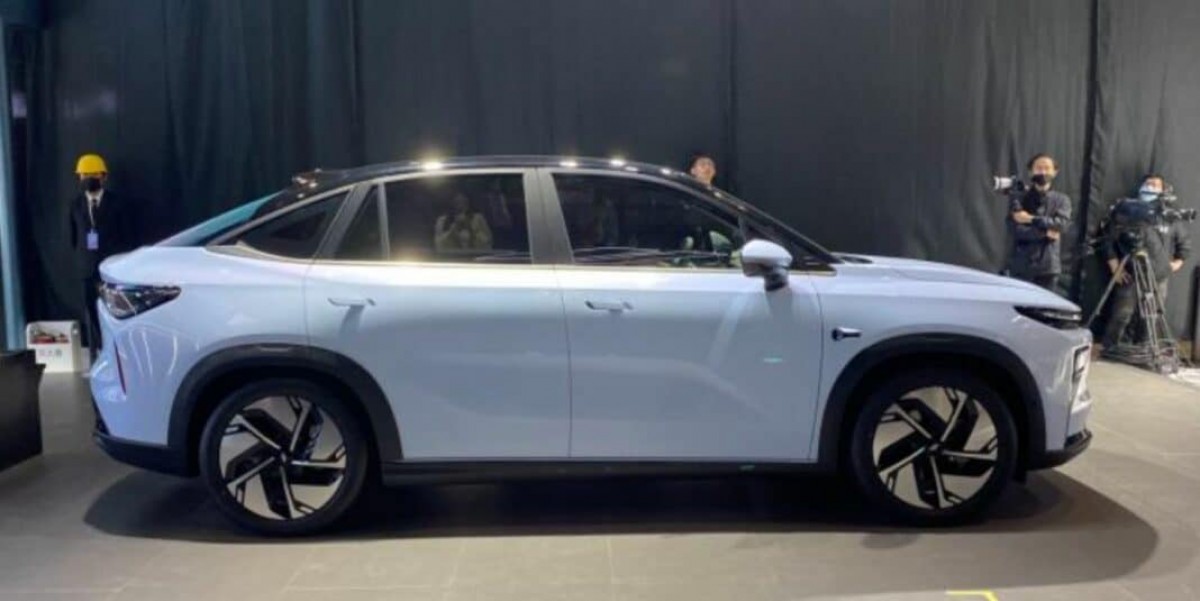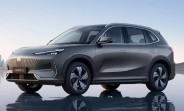Ruilan 7: Geely's latest electric SUV brings swappable battery
Geely is expanding its model and brand portfolio at a rapid pace, we just saw the Polestar 4 unveiled couple of days ago and now we have a preview of yet another electric SUV Coupe. This time it is the Ruilan 7 which is manufactured jointly by Geely and Lifan. This swanky-looking SUV has an ace up its sleeve, or rather under its body.
 Ruilan 7
Ruilan 7
While Nio has been developing its battery-swapping technology for a few years now, other automakers were watching it carefully. It’s almost as if Nio was a free experiment for its competitors and since it appears the battery swapping makes a lot of sense, the other manufacturers are now jumping on the bandwagon. Just like the automotive world did with Tesla - wait and see, if it works - jump in and make it bigger.
Ruilan 7 is the first electric SUV that’s made on the new EV architecture designed by Geely and Lifan to specifically support battery swapping. The GBRC (Global Battery Rapid Change) technology is much faster than the one offered by Nio. The Ruilan 7 can apparently have its battery changed in under a minute - 5 times faster than the latest Nio swap stations can.

The car itself doesn’t really stand out, it’s not a bad-looking SUV with a swooping roofline. It is an amalgamation of many designs - rear lights from Smart #3, the glasshouse takes its clues from the Audi Q8 e-tron Sportback. It’s a good-looking EV but not one you’d instantly recognize on the road.
When it comes to tech, this vehicle comes with plenty of it. The LiDAR sensor on the top works in tandem with a host of cameras and sensors to offer fairly advanced ADAS developed by Geely. This in-house solution is built around Geely’s own Longying No.1 (what a name) cockpit computing architecture that in turn uses 7nm processors. Those chips are quite interesting - they are called E04 and apparently have higher computing power than the Snapdragon 8155 and of course, were developed by Geely in-house.

The Ruilan 7 comes with only one powertrain - a single electric motor powers the rear wheels. The company hasn’t released any technical specifications yet but we are confident that the rear motor will be the same as used in Volvo XC40 or the Smart #3. In the Smart, it offers 200 kW, and in Volvo, it is rated at 175 kW - the Ruilan 7 will have similar figures.
The battery capacity hasn’t been revealed yet but the company claims that the CLTC expected range is 550 km and 750 km, depending on the battery size. That suggests two batteries with around 66 kWh and 77 kWh capacity. The GBRC tech supports 7 kW AC charging as well as 2 kW, the DC charging is quoted to replenish the battery in 40 minutes which is rather slow and means no more than 100 kW support. But the whole point of this new technology is a 1-minute battery swap - why wait 40 minutes?

China has the highest number of battery swap stations and that number is about to go through the roof. Thanks to many automakers joining forces together to provide this new service, Nio’s position as a market leader is about to be challenged. The rest of us will have to wait but this tech, sooner or later, is coming our way.





Facebook
Twitter
Instagram
RSS
Settings
Log in I forgot my password Sign up